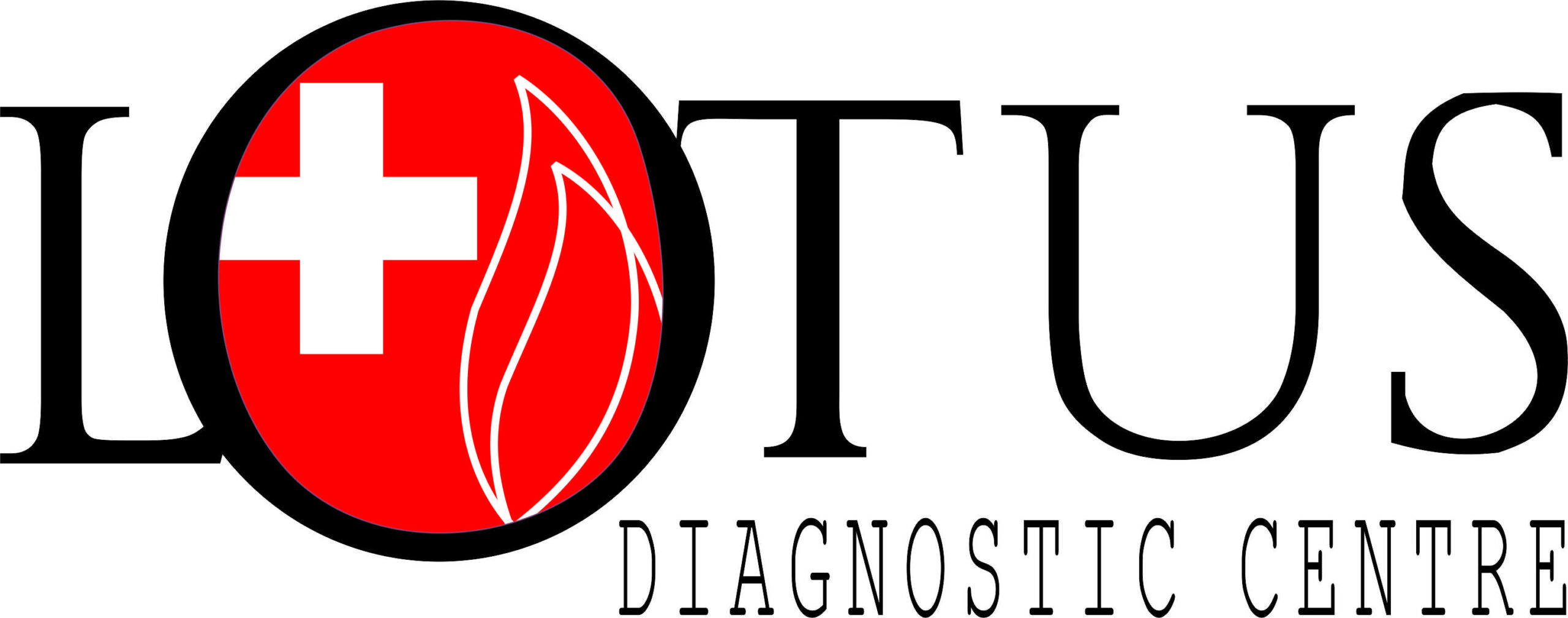
Fetal Medicine
Fetal Medicine at Lotus Diagnostic Centre
Pregnancies are complex as much as they are valuable. The mother-to-be and her unborn child travel a long intricate journey together before the birth of the little one. During this period, regular monitoring and assessments of the foetus through our Fetal Medicine OPD can help in achieving safe births.
Most babies are born healthy, however there is the background rate for birth defects of 3 – 4 % for all pregnancies which translates to 1 in 33 babies.
Only 30% of birth defects may have a known cause as Chromosomal Abnormalities, single gene defects or teratogenic exposure. In a family in which birth defects are already present the chance for a couple to have a child with birth defects is higher than the population risk of birth defects of 3 – 4 %.
Birth defects can be major or minor. The 5 most common birth defects are:
- Heart Defects
- Cleft Lips
- Cleft Palate
- Down’s Syndrome
- Spina Bifida
Why Choose Lotus?
At Lotus our team of highly experienced Fetal medicine specialists is dedicated to providing care, treatment and all necessary medical guidance to manage any complications that may arise in course of a normal or a high-risk pregnancy.
The accuracy of ultrasonographically detectable Fetal malformations is higher at tertiary facilities like ours which use high quality ultrasound machines, highly experienced, trained and skilled doctors.
Services offered
Our services supporting Maternal and Fetal Medicine includes Fetal scans & Screening/diagnostic tests, genetic services, gynaecological scans & procedures.
- Trimester wise scans of Fetal growth, development or anomalies
- Early detection screening for prenatal diagnosis of chromosomal abnormalities and genetic syndromes.
- Investigation, therapy and management of suspected or known Fetal abnormality
- Multiple pregnancy management including complications
- Diagnosis and management of growth restricted fetuses and placental insufficiency
- Fetal infection detection and treatment
- Support for Fetal safety for women with previous poor pregnancy outcomes
Ultrasounds, Scans and Procedures in First Trimester
Early Pregnancy Scans
Early Pregnancy can be seen on a scan from the 4 – 6th weeks (halfway through your first trimester). Early pregnancy scans in fetal medicine are done to confirm a pregnancy, to check whether implantation is in the correct segment of uterus, to know when you conceived.
Dating & Viability Scan
Viability scans are very important as it confirms the birth date and checks for Fetus viability. It is done transvaginal for more accuracy and is performed between 6 – 8 weeks of the pregnancy.
Viability scans are done to confirm:
- Singleton or multiple pregnancies (how many embryos are present).
- The viability of a pregnancy
- The presence of a heartbeat
- The gestation of pregnancy (number of weeks) by identifying the size of the pregnancy sac or the embryo
- If the pregnancy is healthy by ruling out ectopic pregnancy and checking if the pregnancy sac is located within the uterus or not
- The presence of any internal bleeding
- Expected date of Delivery
Nuchal Translucency Test
A Nuchal Translucency (NT) scan is a measure of the sonographic appearance of the sub-cutaneous accumulation of fluid under the skin behind the baby’s neck in the first trimester of pregnancy. It is done between 11 -14 weeks of the pregnancy. NT scan is done transabdominally but sometimes can be done transvaginally also when the abdominal wall is very thick.
NT scan is done to determine:
- Chromosomal Abnormalities – risk assessment for trisomies (T21, T18 & T13) is done using NT, maternal age, Fetal heartbeat, Nasal bone and blood flow through ductus venosus and fetal heart and Hormones PAPP-A and Free – BHCG.
- Multiple pregnancies diagnosis
- Fetal growth restriction and maternal pre-eclampsia risk is evaluated using uterine artery doppler during the scan
- Pregnancy dating
Non-invasive Prenatal Screening Test (NIPT)
Non-invasive prenatal screening test is performed using maternal blood sample as early as 10 weeks of pregnancy. NIPT is done to determine whether a fetus will be born with certain genetic abnormalities. NIPT looks for chromosomal disorders caused by an extra or missing copy of chromosome as Down’s syndrome (T21) caused by extra chromosome, trisomy18 caused by extra chromosome18, Trisomy13 caused by extra chromosome13 and extra or missing copies of the X chromosome and the Y chromosome. Accuracy of the test varies by disorder. Extended NIPT may also include screening for additional chromosomal disorders caused by deleted or duplicated sections of a chromosome or variants in a single gene. This test has an accuracy of 99% therefore an abnormal result requires follow-up with invasive amniocentesis. NIPT is a screening test only as the free Fetal DNA circulating in maternal blood originates from Placenta and not the Fetus therefore the presence of chromosomal abnormality limited to the Placenta only may result in false positive. Vanishing Twin, Low Fetal DNA fraction in maternal blood, Maternal chromosomal abnormalities may result in false positive or false negative result.
Chorionic villus sampling (CVS)
This is an invasive diagnostic test which takes a sample of the tissue from the placenta through a fine needle transabdominally. It is done between 11 – 15 weeks of pregnancy. The Chorionic Villi sample are used to check for chromosomal abnormalities. This test carries a risk of miscarriage of 0.3%.
Amniocentesis
This is an invasive diagnostic test used to diagnose fetal defects in early second trimester of pregnancy. This is done in the 16 – 20th week of pregnancy. This is recommended in women who are older than 35 on their due date, women who have already children with birth defects, family history of birth defects for which a diagnostic test is available, confirmation of indication of Down’s and other defects which may have shown up previously during routine maternal blood screening.
Amniotic fluid is sampled through a thin needle transabdominally. This test carries 0.1% – 0.3% risk of miscarriage because of its invasive nature.
Ultrasounds, Scans and Procedures in Second Trimester
Fetal Anomaly Scan
Also known as mid-pregnancy scan/level 2 scan is performed between 18-21 weeks of the pregnancy. This scan checks for physical development of major parts of your baby though every condition cannot be picked up.
The most important objective during a targeted anomaly scan is to identify cases that need a dedicated fetal echocardiogram. The doctors carefully examine baby’s head, face, heart, bones, brain, abdominal wall, bowel, kidneys, placenta and amniotic fluid to check the healthy development. Location and appearance of placenta including site of cord insertion is also assessed. Structural abnormalities that can be identified are spinal defects, cleft lip, cleft palate, significant club feet, body wall abnormalities, major heart defects, major urinary abnormalities and subtle markers that may indicate chromosomal disorders as Down’s syndrome which were missed in an earlier scan. Detailed measurements are taken to calculate the baby’s growth. Records of these measurement are kept so that we can compare them against subsequent scans.
At Lotus, ultrasound is performed with a high-end machine which has a good cine-loop facility which is extremely helpful in diagnosis of fetal cardiac anomalies.
Foetal Echocardiography & Doppler
Foetal echocardiography is similar to an ultrasound. It is done to see the structural defects in the foetal heart. It can also be used to look at other functional aspects and rhythm abnormalities of unborn child’s heart.
It is usually done in the second trimester, between 22 to 24 weeks.
The incidence of CHD is 8 per 1000 live births however the incidence is much higher in the foetal population. A large number of fetuses with complex cardiac anomalies succumb in the first trimester itself – that is, before the cardiac anomaly is suspected.
A fetal echo is recommended by the doctor if:
- There is family history of cardiac abnormalities
- A sibling was born with a congenital heart defect
- Congenital heart disease in mother or father
- Increased nuchal thickness
- Structural defects in other systems
- Fetal infections
- IUGR in mid trimester.
- A routine prenatal ultrasound has discovered possible heart abnormalities.
- A chromosomal or genetic abnormality discovered in the foetus.
- Mother is abused drugs or alcohol during pregnancy.
- Mother has had rubella during pregnancy.
- Mother has diabetes, lupusor connective tissue disease.
Ultrasounds, Scans and Procedures in Third Trimester
Growth Scans
Antenatal surveillance of fetal growth is an essential part of good maternity care as lack of detection of fetal growth restriction / retardation is directly associated with still birth and perinatal morbidity. Most cases of fetal growth restriction are late onset that is after 32 weeks in high risk pregnancy. Scans are recommended serially.
This diagnostic scan is used to measure the baby’s head, waist and thigh bone, check for the baby’s overall development. Parameters like baby’s position, weight, the quantity of amniotic fluid, the position of the placenta are looked up in this scan. Blood flow through the cord and some vessels in the baby’s head are also measured. It is also highly recommended, if you’ve had complications in previous pregnancies or if you have medical conditions like diabetes or high blood pressure.
Interval growth scan
The interval growth scan is usually performed between 28-32 weeks of pregnancy. This scan studies the biophysical profile of the baby which includes the movements of the baby, fetal breathing movements, muscle tone, heart rate, amniotic fluid level.
Fetal Doppler Ultrasound
A Fetal Doppler ultrasound is used to measure the blood flow in the baby’s veins and the overall health of the foetus. It can give a visual or audio representation of the movement of blood through the veins of the baby.
Babies with growth restriction / retardation have different flow velocity wave forms in their umbilical artery. There is high perinatal mortality associated with such pregnancies. The frequency of monitoring increases in suspected cases of IGUR.
Double Marker Blood Test
Papp-A & Free BHCG are blood tests are used together with NT scan for assessing risk for Down’s, Edward’s & Patau’s Syndrome.
Pregnancy associated plasma protein Screening (PAPP-A): This is a protein made by the placenta in early pregnancy. Abnormal levels are linked to a higher risk for chromosome problems.
Human Chorionic Gonadotropin (hCG): This is a hormone made by the placenta in early pregnancy. Abnormal levels are linked to a higher risk for chromosome problems.
Multiple Marker/Quadruple Screen:
This screening test during pregnancy for birth defects screens the baby for Down’s syndrome and neural tube and abdominal wall defects.It is usually performed between the 16 -18th week of pregnancy. This test measures 4 hormones in the maternal blood.
Alpha-fetoprotein screening (AFP): This is a protein made by the developing baby’s liver.
Beta HCG: This is a hormone made by the placenta.
Estriol: This is a hormone made by the placenta in the baby’s liver and placenta.
Inhibin-A: This hormone is made by the placenta.
This test is done to evaluate if your pregnancy has an increased chance of being affected by disorders listed above. If the risk is low than this test can offer reassurance that there is a decreased chance for Down’s syndrome, Trisomy18, neural tube and abdominal wall defects. Increased chance will allow you to consider additional testing.
Our Fetal Medicine Specialists


